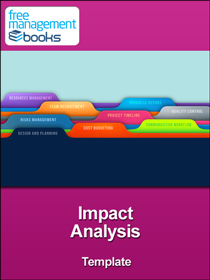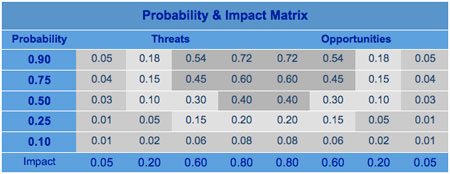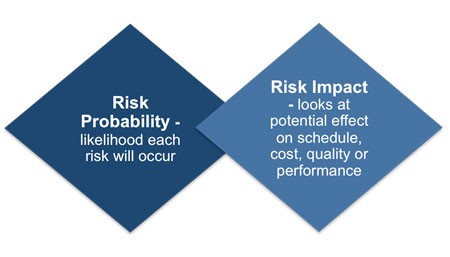
Impact Analysis Template
This template is designed to enable you to keep a log of the issues that a project faces and to record the likely impact that each issue could have on the overall success of the project.
Not all fields of this template are relevant for every project, as project manager you will determine which fields are necessary for your project and meet the needs of the organization’s culture. The level of detail will also vary according to the recipient of the data and a glossary of terms used in the descriptions should be attached to ensure easy comprehension.
Understanding the risks and issues that could influence the course or outcome of a project are vital to its success. There are two facets of potential risks a project could face first, what are the chances it will happen and if it does how much influence will it have on that phase or the whole project? Identification of risks and issues cover all aspects such as how users, procedures and technology.

There are several categories that an impact will be judged on:
• Overall Change – focuses on the impact broad changes that will bring about the changes from the projects completion.
• Population / Audiences – looks at the impact on specific audiences or groups.
• Organizational – considers the impact on various areas of the organization i.e. cultural, processes, infrastructure
It is essential that stakeholders understand the impact of potential issues in the planning stages of a project so that they can be properly planned for and anticipated. No project manager wants to have to communicated that the ‘unexpected’ has occurred and that they have made no provision for it.
Risk probability assessment investigates the likelihood that each specific risk will occur, whereas risk impact assessment investigates the potential effect on a project objective such as schedule, cost, quality, or performance.
Both the likelihood and impact are given a score according to the definitions given in the risk management plan and these can be considered together to provide a risk score. Risks with a high score will be given high priority while those with a low score will be included on a watch list for future monitoring.

This information is usually presented in the form of a probability and impact matrix as shown in the diagram above. It specifies combinations of probability and impact that lead to rating the risks as low, moderate, or high priority. The type of management response should be:
Threats
o High-risk (shown in dark gray boxes) are priority and need a hard line response.
o Low-risk (mid-gray boxes) need to have a contingency made for them & monitored
Opportunities
o Dark gray boxes show ones to pursue first as they offer the most benefit & are more easily achieved.
o Mid-gray boxes indicate the ones to be monitored.

It is possible to rate a risk separately for cost, time, scope and quality. In addition, it can develop ways to determine one overall rating for each risk. An overall rating scheme can be developed to reflect the organization’s preference for one objective over another and using those preferences to develop a weighting of the risks that are assessed by objective.
Project team meetings and discussion with key personnel involved with or affected by the project are some of the key sources of identifying and assessing the impact of likely or potential issues. Depending on the complexity and breadth of a project, focus groups may be used to discover unique issues that could have a detrimental affect on a project. Their specialist knowledge or use is necessary to understand the impact on the project and its organization.
The sort of data that would be recorded in the impact analysis template is:
• Areas or departments of the organization that are impacted.
• Roles & positions that are affected.
• Description of dependencies.
• Complexity of issue
• Name the work packages it effects & level of difficulty on implementation
Once an issue has been recorded in this template, agreement will be reached on the level of risk it could have on the project. The level assigned to each issue dictates the order in which the issues are tackled with the ‘critical & high’ priority ones being dealt with first. Recommendations are discussed with the project sponsor and key stakeholders who must agree on the proposed resolution.
If the impact of a named issue is considered necessary to alter the work package or project plan the agreed resolution would then me assigned to an individual who was responsible for its implementation. The change control process would determine how this alteration was incorporated into the appropriate project plans and the format of reporting requirements.
The impact analysis template is especially important in projects that have parts of the team working in different geographical locations. Without this sort of document it would be difficult to miss aspects of a work package that have changed as a result causing excessive levels of re-work. This document is a key component of the estimation process and provides background information and reasons essential to that process.
